Aerosolized Fentanyl During Decontamination
Download this case study on Canadian Decon Solutions’ encounter with fentanyl in a vehicle and how the MX908 with Aero provided real-time intel at the point of need.
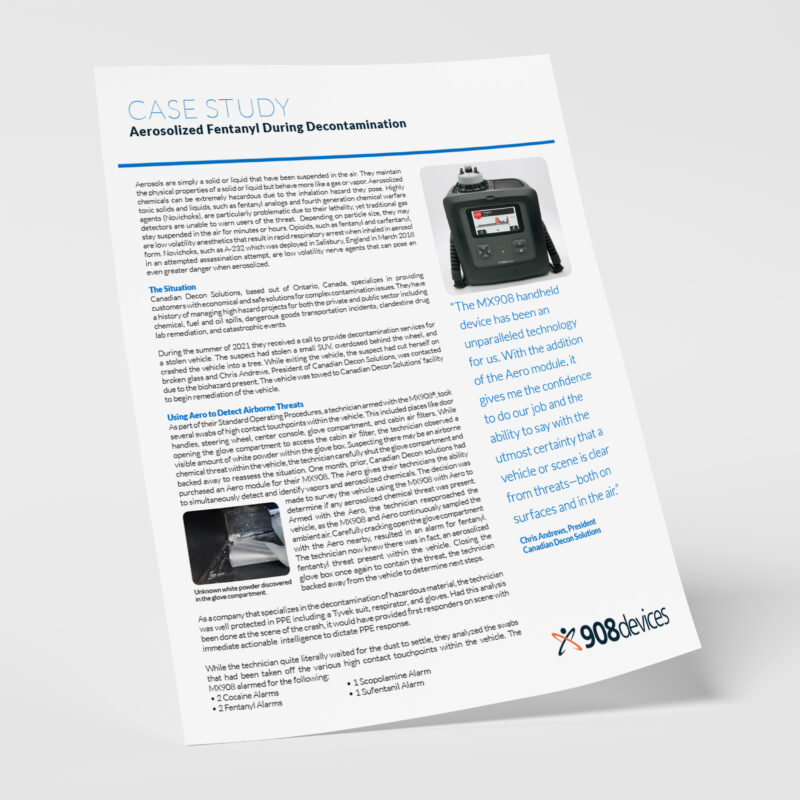
Aerosols are simply a solid or liquid that have been suspended in the air. They maintain the physical properties of a solid or liquid but behave more like a gas or vapor. Aerosolized chemicals can be extremely hazardous due to the inhalation hazard they pose. Highly toxic solids and liquids, such as fentanyl analogs and fourth generation chemical warfare agents (Novichoks), are particularly problematic due to their lethality, yet traditional gas detectors are unable to warn users of the threat. Depending on particle size, they may stay suspended in the air for minutes or hours. Opioids, such as fentanyl and carfentanyl, are low volatility anesthetics that result in rapid respiratory arrest when inhaled in aerosol form. Novichoks, such as A-232 which was deployed in Salisbury, England in March 2018 in an attempted assassination attempt, are low volatility nerve agents that can pose an even greater danger when aerosolized
The Situation
Canadian Decon Solutions, based out of Ontario, Canada, specializes in providing customers with economical and safe solutions for complex contamination issues. They have a history of managing high hazard projects for both the private and public sector including chemical, fuel and oil spills, dangerous goods transportation incidents, clandestine drug lab remediation, and catastrophic events.
During the summer of 2021 they received a call to provide decontamination services for a stolen vehicle. The suspect had stolen a small SUV, overdosed behind the wheel, and crashed the vehicle into a tree. While exiting the vehicle, the suspect had cut herself on broken glass and Chris Andrews, President of Canadian Decon Solutions, was contacted due to the biohazard present. The vehicle was towed to Canadian Decon Solutions’ facility to begin remediation of the vehicle.
Using Aero to Detect Airborne Threats
As part of their Standard Operating Procedures, a technician armed with the MX908®, took several swabs of high contact touchpoints within the vehicle. This included places like door handles, steering wheel, center console, glove compartment, and cabin air filters. While opening the glove compartment to access the cabin air filter, the technician observed a visible amount of white powder within the glove box. Suspecting there may be an airborne chemical threat within the vehicle, the technician carefully shut the glove compartment and backed away to reassess the situation. One month, prior, Canadian Decon solutions had purchased an Aero module for their MX908. The Aero gives their technicians the ability to simultaneously detect and identify vapors and aerosolized chemicals.
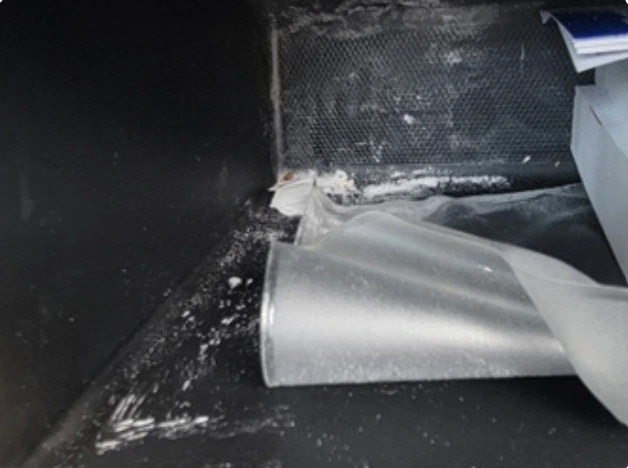
Unknown white powder discovered in the glove compartment.
The decision was made to survey the vehicle using the MX908 with Aero to determine if any aerosolized chemical threat was present. Armed with the Aero, the technician reapproached the vehicle, as the MX908 and Aero continuously sampled the ambient air. Carefully cracking open the glove compartment with the Aero nearby, resulted in an alarm for fentanyl. The technician now knew there was in fact, an aerosolized fentantyl threat present within the vehicle. Closing the glove box once again to contain the threat, the technician backed away from the vehicle to determine next steps.
As a company that specializes in the decontamination of hazardous material, the technician was well protected in PPE including a Tyvek suit, respirator, and gloves. Had this analysis been done at the scene of the crash, it would have provided first responders on scene with immediate actionable intelligence to dictate PPE response.
While the technician quite literally waited for the dust to settle, they analyzed the swabs that had been taken off the various high contact touchpoints within the vehicle. The MX908 alarmed for the following:
- 2 Cocaine Alarms
- 2 Fentanyl Alarms
- 1 Scopolamine Alarm
- 1 Sufentanil Alarm
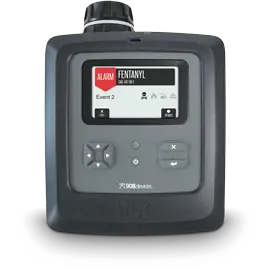
“The MX908 handheld device has been an unparalleled technology for us. With the addition of the Aero module, it gives me the confidence to do our job and the ability to say with the utmost certainty that a vehicle or scene is clear from threats—both on surfaces and in the air.”
Chris Andrews, President Canadian Decon Solutions
The Result
With a thorough analysis of chemical threats present, both from the MX908 with Aero analysis as well as trace analysis from swabbed surfaces, Canadian Decon Solutions could confidently plan for the decontamination of the vehicle. Their primary method of decontaminating a vehicle like this is First Line Technology’s Electrostatic Decon Kit. This kit offers users the easiest, most efficient way to decontaminate threats using Dahlgren Decon applied from an electrostatic spray gun. After the remediation was complete, the MX908 Aero was again employed to confirm that there was no longer a presence of any aerosolized threats. Subsequent swab samples also returned no alarms and the technician could confidently say that there was no longer a chemical threat within the vehicle.
Given the success of the MX908 with Aero in this scenario, Canadian Decon Solutions has now incorporated usage of this device into their standard operating procedures as an initial survey tool as well as to confirm decontamination is complete. The MX908 has become their go-to tool for trace chemical identification to support their mission. According to Chris Andrews, President of Canadian Decon Solutions, his customers have become accustomed to the detailed reports generated by the MX908 which they submit in conjunction with a summary of the services provided.
The MX908 has become the go-to tool for trace chemical identification to support Canadian Decon Solutions‘ mission.
About MX908
MX908 leverages high-pressure mass spectrometry to deliver dramatically enhanced sensitivity and broader threat category coverage. This down-range tool increases mission support with unmatched flexibility and trace detection power for first responders in priority drug, chemical, explosive and high-threat hazmat scenarios. MX908 lightens the overall technology burden by displacing other less selective technologies from the response toolkit.
About the Aero
The Aero is the first comprehensive solution to detect and identify vapor and aerosol threats, such as Chemical Warfare Agents (CWAs) and Pharmaceutical Based Agents (PBAs), simultaneously. The MX908 with Aero can be deployed in diverse applications ranging from initial air monitoring when entering a building or a confined space, to venue protection employing continuous air monitoring, through high throughput mail screening and on-scene evidence packaging. This device continuously samples and analyzes vapors while collecting aerosol particulates on a mesh within the unit. This mesh is periodically flash heated, which vaporizes any aerosol particulates, and allows them to be analyzed. The Aero is one of three modules that allow the MX908 to analyze samples in any state—solids, liquids, vapor, and now aerosols.
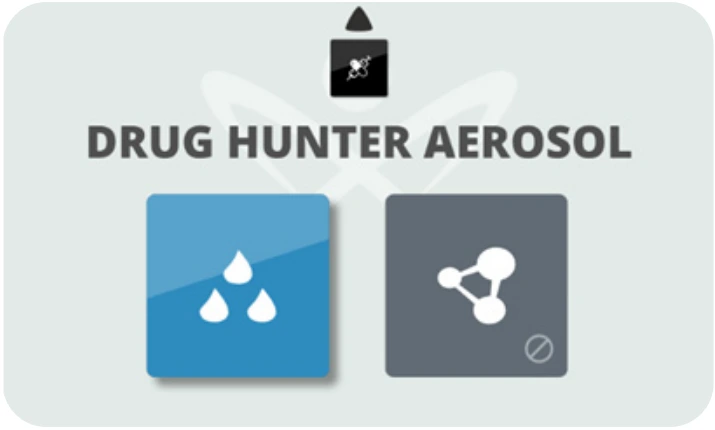
MX908 user interface with Drug Hunter Aerosol Mode selected.
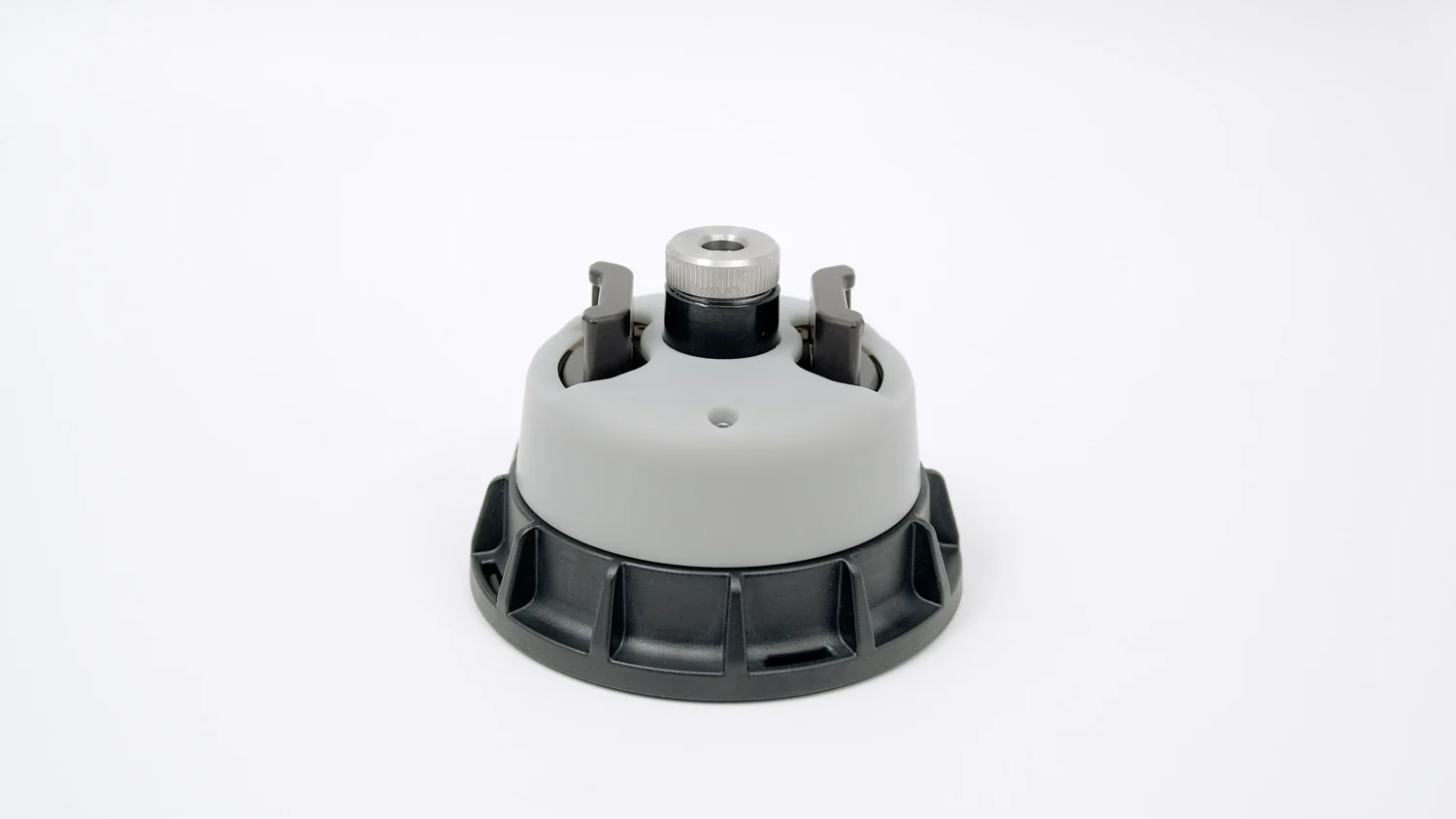
The Aero is the first comprehensive solution to detect and identify vapor and aerosol threats simultaneously.
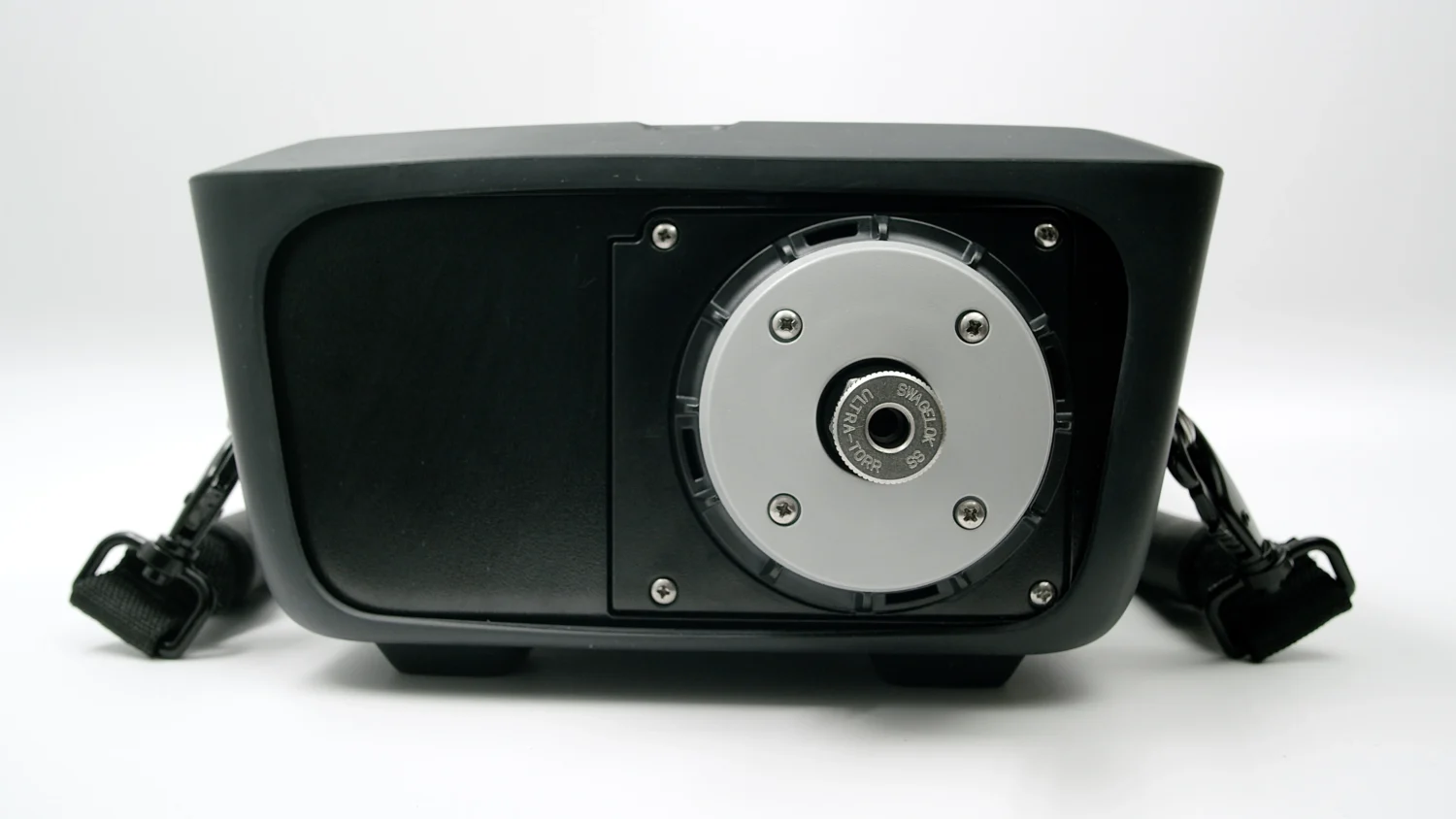
The Aero attaches to the MX908 for an easy transition to vapor and aerosol analysis.
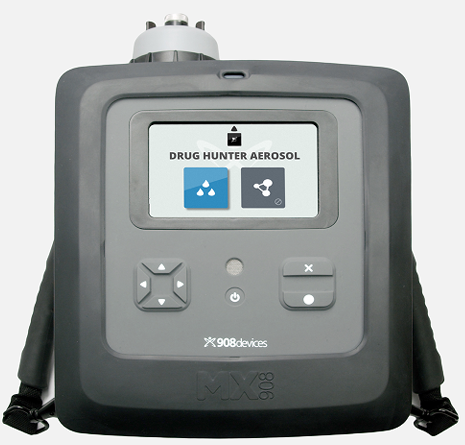
MX908 is the only field deployable device capable of sampling solids, liquids, vapors, and aerosols
Subscribe to Our Communications
Signup to receive new product updates, technical tips and more.